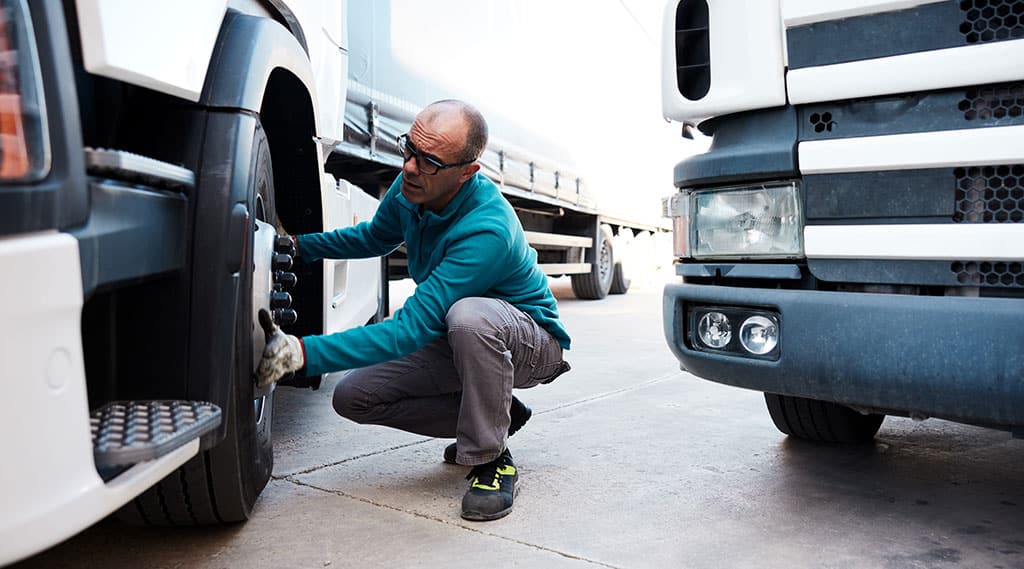When transporting cargo in a semi trailer, you always hope for the best: wide-open roads, good weather, properly packaged items, etc. Unfortunately, that ideal scenario rarely happens. Typically, one or more factors increase the likelihood of cargo damage. If it occurs, there can be several types of consequences, including:
- Financial. Who ultimately pays for cargo damage may vary, but somebody pays, meaning nobody is happy.
- Logistical. Dealing with incidents can create a ripple effect that delays successive waves of subsequent pickup and deliveries.
- Reputational. Accidents happen. But if they affect your customers too often, word gets around. And if someone is evaluating two companies that are nearly identical, but one has a reputation for experiencing cargo damage, you can guess who they will give their business to!
So, understanding why goods transported in semi trailers sometimes don’t survive the trip is crucial.
Cargo Damage in Semi Trailers Is Largely Avoidable
Factors outside your control can result in damage to the goods or materials you transport in semi trailers. That is the bad news. The good news is that problems are more likely to result from issues within your control. So, you can take action to avoid them.
Of course, your actions to lower the risk of cargo damage in your semi trailers must be continual. As soon as you let your guard down, the possibility of incidents rises.
Below are potential issues followed by best practices you should adopt to minimize your damage risk.
Cargo Damage in Semi Trailers: 7 Ways to Prevent It
Check out the reasons below that goods and materials suffer damage during transport in semi trailers and the ways to reduce the risk.
- Careless handling before, during and after the trip. Whether it is your employees or a logistics partner, damage can occur if anyone fails to use the proper care when loading, securing or unloading products or materials in a semi trailer. The best way to prevent this is to establish and maintain a culture that prioritizes the proper handling of goods.
- Rushed work. Closely related to careless handling is working too quickly. Hurrying to get loaded or unloaded and on the road as fast as possible significantly increases the risk of cargo damage. It has been said that “slow is smooth, and smooth is fast.” Team members are less likely to make costly mistakes if they are engaged in their work. You can help them by building ample time to care for goods properly into your schedule .
- Improper packaging. You have carefully moved boxes into your semi trailer and secured them so they remain stationary during your trip. That is crucial. But if the goods aren’t packed properly, they can shift within their containers on your trek and suffer damage. Developing packaging standards for your company and ensuring team members follow them can help prevent this issue. If someone else packages the items you transport, simply asking them how the goods are secured within the boxes or crates can help draw their attention to their own standards (or lack thereof).
- Failing to label packages. When people can’t quickly determine what is in a box or crate, they have to move things around to make that assessment. Both that movement and potentially failing to resecure cargo afterward can result in damage. That is particularly true with fragile goods. Items that require specific environmental conditions can also be ruined if handlers and drivers don’t follow those requirements. Placing easy-to-read labels on multiple surfaces is an easy way to avoid this scenario.
- Using incorrect or poorly functioning semi trailers. Getting shipments from point A to point B safely requires that you use the right equipment. Trying to “make do” with a semi trailer not designed for the task at hand is a recipe for disaster. Similarly, using semi trailers that aren’t properly maintained can lead to a dangerous and costly equipment failure. To avoid this situation, you should ensure that trailers you own are professionally serviced as needed. You can also rent or lease semi trailers from a provider like Boxwheel that takes excellent care of them.
- Not choosing the best routes. Every driver who hauls a semi trailer knows that there are certain roads and highways that increase the risk of cargo damage due to their design, condition, etc. You can address this issue in two steps. First, talk with drivers about the routes they are taking—especially following a damage incident. Second, identify those that increase damage risk and instruct drivers to avoid them.
- Failing to anticipate and address bad weather. To their credit, truck drivers have a strong “can do” attitude and commitment to getting products and materials where they need to be when they need to be there. Unfortunately, rain, snow, wind and other inclement weather increase the risk of damage to cargo in a semi trailer. Sudden braking, swerving and other maneuvers can topple even carefully secured boxes and crates. Dealing with severe weather requires a collaboration between drivers and schedulers. Drivers must stay informed about weather forecasts and current conditions and report any concerns to schedulers. Schedulers must work with them and with other stakeholders to ensure trips are safe for drivers and their cargo.
Rent or Lease Semi Trailers You Can Rely On
You and your team must handle cargo properly to reduce the risk of damage. That starts with using the right semi trailers.
Boxwheel rents and leases reefers, dry vans and liftgate semi trailers from the best manufacturers in the business, including Wabash, Utility and Great Dane. Companies throughout the southwestern U.S.—Colorado, Nevada, Arizona, Utah and Texas—turn to us for equipment that helps them move goods and materials efficiently and safely.
Contact Boxwheel if you have questions about our company or our extensive inventory of semi trailers for rent or lease. We’re happy to discuss your transportation needs and how we can help you meet them. Semi trailers are also an excellent option for on-site storage of products and materials.

